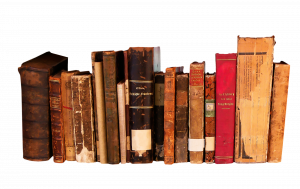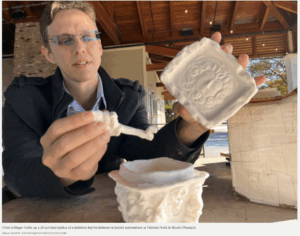Abraham Lincoln must have been pained by the number of Washingtons on the other side during the Civil War. He idolized George Washington. One of the first books he read as a boy was Parson Weems’s apocryphal biography of the first president, and it made a lasting impression. Later, as a Congressman, Lincoln made a pilgrimage to Washington’s Mount Vernon and regaled his friends afterward about the experience.
Lincoln might find solace in the fact that none of the Confederate Washingtons were direct descendants of the first president, who didn’t have children. But his brothers and half brothers did. They were Virginia aristocracy, marrying the likes of the Lees. Most prominent in Lincoln’s day was the last owner of Mount Vernon, John Augustine Washington III, the great-grandson of George’s brother John. When war came, he walked away from the Union.

George Washington had no children of his own, but for the descedants of his brothers and half-brothers along with those of his
stepchildren, the Civil War proved a costly affair – with lives and fortunes gone by the war’s end in 1865.
John Augustine was not a military man, but he entered the Confederate Army as a lieutenant colonel and aide-de-camp to (and tentmate of) Robert E. Lee, a distant cousin. The pious, gentlemanly Washington quickly turned partisan, explaining in a letter from July 1861: “In fact the Yankees are for the most part a set of plundering fellows, who will steal and bully when they can and do as little fighting as possible.”
Two months later, he was shot and killed by such fellows at the Baffle of Cheat Mountain, Va. In a condolence letter to Washington’s family, Lee told of the circumstances: “He accompanied my son, Fitshugh, on a reconnoitering expedition and I fear was carried too far by his zeal for the cause of the South which he had so much at heart. Before they were aware they were fired upon by a concealed party. … He was the only person struck and fell dead from his horse.”
Washington was buried in the graveyard of Zion Episcopal Church in Charles Town, in present-day West Virginia, the final resting place of more than 70 of his family members.
John Augustine’s brother Dick was also in the Confederate Army, but he was discharged for health reasons soon after his brother’s death. The following spring, though a civilian, he was taken prisoner by Union cavalry. A cousin, George Washington, interceded with a friendly Confederate congressman, and Dick was eventually exchanged. He did not rejoin the fight, because Lee advised him to take care of his family responsibilities.
Several of the Southern-leaning Washingtons lived in and around Charles Town. Lewis William Washington was one. A great-grandson of George’s older half-brother Augustine, he lived near Harpers Ferry and was renowned enough for John Brown to seize him as a hostage.
After being freed, Lewis became the lead prosecution witness in Brown’s trial. His son, James Barroll Washington, naturally joined the Confederate Army. A West Pointer, he served as aide-de-camp to Gen. Joseph E. Johnston. He was captured during the Battle of Seven Pines and posed for a picture with Union Capt. George Armstrong Custer before being released to rejoin the Confederate Army. He survived the war.
Charles Armistead Alexander, a nephew of Dick Washington, was a doctor for the Confederate Army. He was captured and imprisoned at Point Lookout, Md. Suffering from what was considered the “family curse” of tuberculosis, he died at home after his stepmother successfully petitioned the White House for his release.
Bushrod Corbin Washington II, also a descendant of George’s brother John, grew up on the enormous Claymont estate outside Charles Town. He joined the Confederate Army, was captured, exchanged and later became an officer in the 12th Virginia Cavalry. He survived the war and moved to the state of Washington, where he died and was buried. Nonetheless, the family erected a memorial in the graveyard at Zion church.
Bushrod’s brother George Washington, who wrote the letter about a prisoner exchange for Dick, was killed in action in 1863. He was also buried at Zion.
The Washingtons’ first cousins, a branch of the Alexander family, also lived at Claymont and joined the Confederate Army. Thomas Blackburn Alexander died of wounds in a hospital in Staunton, Va., while a second brother, William Fontaine Alexander, served the Confederate Army as a physician.
Claymont, a mansion as big as a modern hotel, was a breeding ground for rebellion. James Washington of Claymont rode with his older brothers Bushrod and George in the 12th Virginia Cavalry and later joined Confederate Col. John Mosby’s Rangers, who bedeviled Union Gen. Phil Sheridan and his subordinate, George Custer (now a general).
James and his cousin Herbert Lee Alexander, who had grown up with him at Claymont, were captured trying to blow up a railroad bridge. Imprisoned at Fort McHenry in Baltimore, James died of typhoid fever in the waning days of the war. Alexander survived the war, only to die of tuberculosis a year later. Both are buried at Zion.
Washington in-laws also served. Tragedy involved descendants of President Washington’s wife, Martha Custis Washington. Two cousins, William Orton Williams and Walter “Gip” Peter, both Confederates, rode into a Union Army camp in Tennessee wearing Union uniforms. Some claim it was on a dare. Once their true identities were discovered, they were given a drumhead court-martial and hanged as spies.
The Washingtons’ sacrifices for the Confederacy were not just in blood. The Harewood estate outside Charles Town was built in the 18th century by another of George Washington’s brothers, Samuel.
James and Dolley Madison were married there in a wedding hosted by Samuel’s son, George Steptoe, who was married to Dolley’s sister. A son of that marriage, Dr. Samuel Walter Washington, married Louisa Clemson, and she was still living there during the Civil War, when it was visited by Union soldiers.
She described conditions in a November 1863 letter: “They have taken all of our turkeys & shot 4 of our sheep before our eyes. … As to horses, they leave us none … We have but 3 horses to work with, the Souths took one waggon & team — & the Federals others.”
After James Washington and Herbert Alexander were caught trying to blow up the railroad bridge, a furious Sheridan ordered: ‘I want you to send to the home of Mrs. Alexander, where the guerilla James Washington and Hebert Alexander were captured, and drive off all the stock except one milch cow, and burn every rail on the Clay Mound [Claymont] farm as punishment for harboring guerillas.”
Lincoln remained obsessed with Washington through the war, and he followed these developments closely. Mary Todd Lincoln visited Mount Vernon in late March 1861, shortly after Lincoln’s inauguration and shortly before Fort Sumter was fired on.
In April 1862, Lincoln himself went there, by boat. But security was a concern. One of those accompanying Lincoln wrote, “I advised the President not to land, and remained in the boat with him.” A month later, Lincoln went to Fredericksburg, Va., to see Ferry Farm, Washington’s boyhood home. This time he took precautions: The town and farm were occupied by Union troops, and a detachment of cavalry rode along.
Lincoln’s final encounter with a Washington was personal. John Augustine Washington IV, a son of Dick and nephew of John Augustine III, suffered from Pott’s disease, a deformity of the spine caused by tuberculosis that causes a hunchback.
Only 17 years old, John Augustine IV was — according to family lore — unable to serve in the Confederate Army but was nevertheless arrested for interfering with Union troops who were seizing cattle. The Union saw things differently. Prison records say the boy was a private in Mosby’s cavalry and carried dispatches for him. He was taken to Washington and incarcerated in Old Capitol Prison, the usual place for suspected Confederate spies.
The boy’s grandmother, Louisa Washington of Harewood, who had lost her turkeys and horses to Union troops a year before, went to the president for help. Lincoln wrote out the release by hand: “Let the boy, John A. Washington, remain in Washington, and attend school, so long as he does not misbehave. A. Lincoln, Nov. 30, 1864.”
The Washington family paid dearly during the war. At least 12 served the Confederacy; eight died in battle, by hanging or of disease. Their estates became battlegrounds; their property was seized; and they were left impoverished. Some, like Dick Washington, had even invested in Confederate bonds. A bright spot for the family came in the 20th century when medical science exorcised the family curse of tuberculosis.
Had George Washington lived until the Civil War, he surely would have seen the issues differently from how succeeding generations did. He had put the United States together, and would not likely have approved its being it torn asunder. He probably would have approved of Lincoln, his spiritual protégé.
– The New York Times, James H. Johnston


